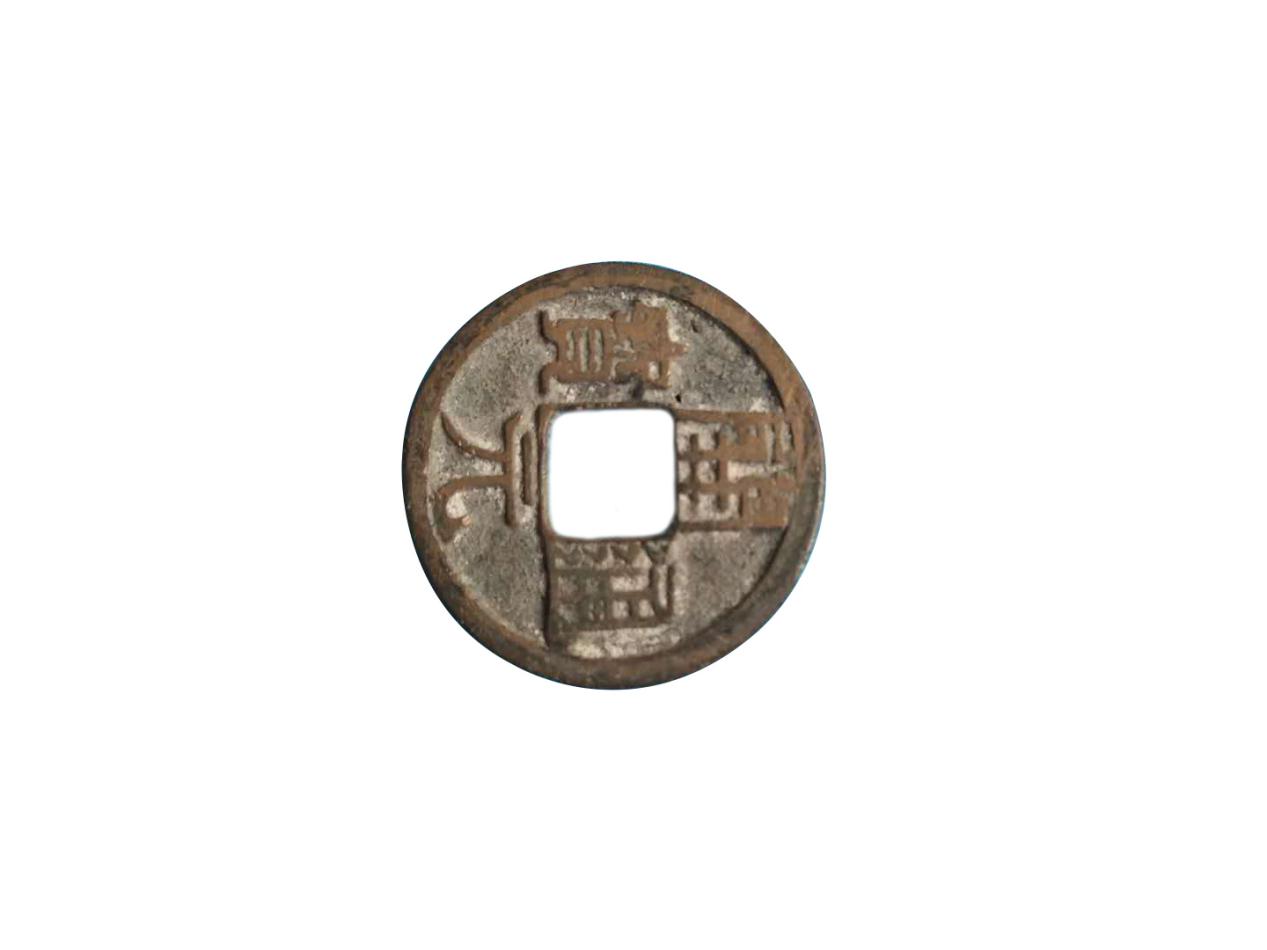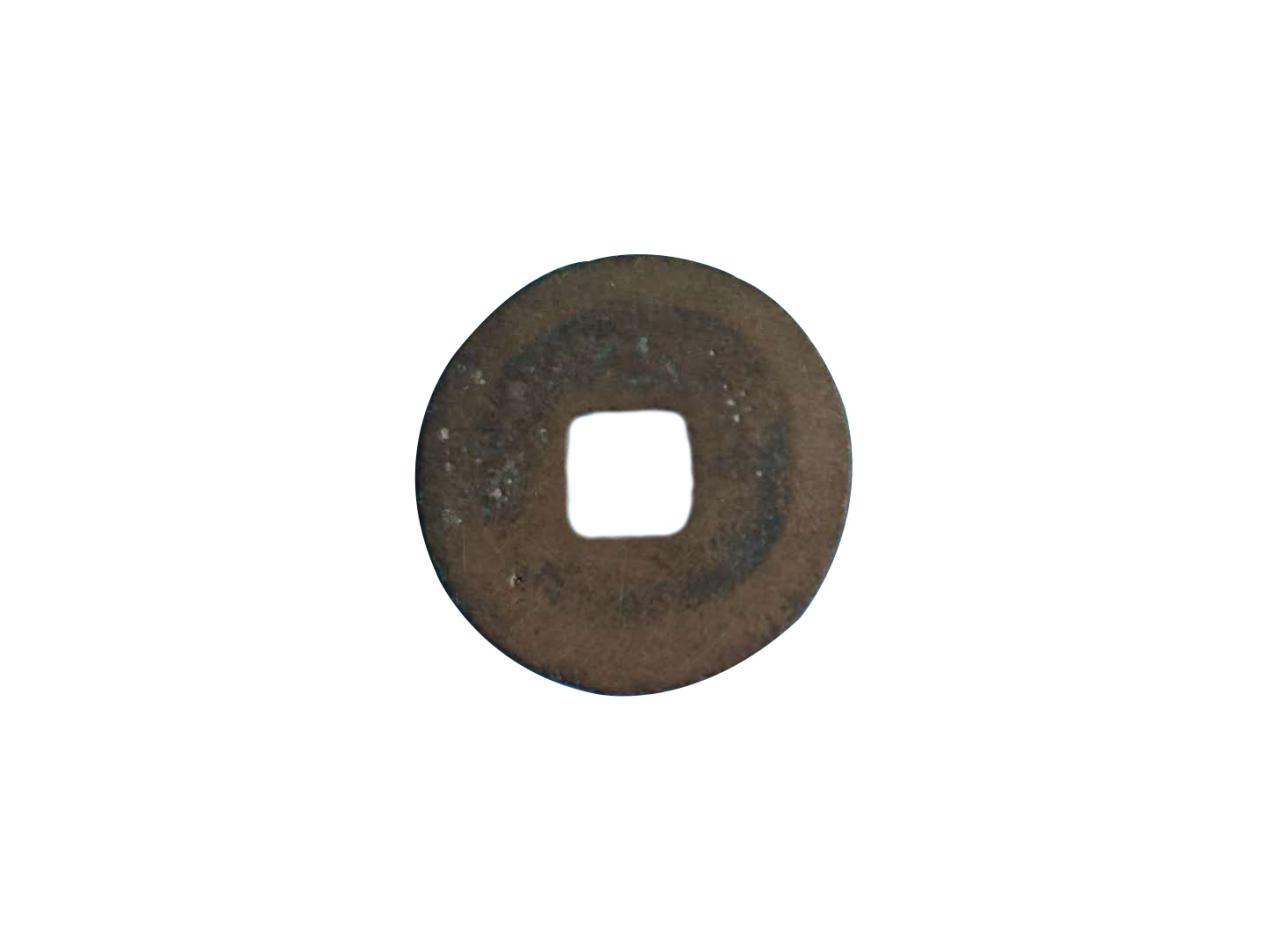唐代開元通寶貨幣。錢幣在唐代始有“通寶”,開創了新紀元,在錢幣發展史上佔有重要地位。唐初沿用隋五銖,輕小淆雜。唐高祖武德四年(西元621年),為整治混亂的幣制,廢隋錢,效仿西漢五銖的嚴格規範,開鑄“開元通寶”,取代社會上遺存的五銖。最初的“開元通寶”由書法家歐陽詢題寫,形制仍沿用秦方孔圓錢,規定每十文重一兩,每一文的重量稱為一錢,而一千文則重六斤四兩。
Kaiyuan Tongbao currency of Tang Dynasty. Coins began to have "Tongbao" in the Tang Dynasty, which created a new era and played an important role in the history of coin development. In the early Tang Dynasty, the Sui five baht was used, which was light and confusing. In the fourth year of Wude reign of emperor Gaozu of Tang Dynasty (621 A.D.), in order to rectify the chaotic currency system, the Sui coins were abolished, and the strict standard of the five baht in the Western Han Dynasty was imitated, and the "Kaiyuan Tongbao" was created to replace the remaining five baht in the society. The original "Kaiyuan Tongbao" was inscribed by the calligrapher Ouyang Xun. The shape of the coin is still the same as that of the Kong Yuan coin of the Qin Dynasty. It is stipulated that every ten Wen should be weighed one or two, and the weight of each article is called one coin, while the weight of a thousand Wen is six catties and four Liang.

銅質開元通寶是比較常見的一類開元通寶,由於年代較遠,出土錢幣較多,故大多表面有鏽,磨損嚴重。除銅質開元通寶外,唐朝也鑄造過金、銀質開元通寶。這兩種貴重金屬幣僅限皇家賞賜,供顯貴玩賞,並不投入流通,囙此存世量極小,尤其是金開元,仿銅開元通寶鑄造,並不作為流通貨幣使用,為宮廷賞賜錢,更彌足珍貴。開元通寶,在我國錢幣史上具有劃時代的地位。唐代以前的錢幣,多以形制或重量為名稱,如刀幣、五銖錢等,而自開元錢後,改稱“寶”、“通寶”、“元寶”等。
Copper Kaiyuan Tongbao is a common type of Kaiyuan Tongbao. Due to its long history and many coins unearthed, most of them are rusty and seriously worn. Besides copper Kaiyuan Tongbao, gold and silver Kaiyuan Tongbao were also cast in Tang Dynasty. These two kinds of precious metal coins are only given by the royal family, and they are not put into circulation. They are extremely rare. Especially, the gold Kaiyuan coins, which were made by imitating copper Kaiyuan Tongbao, are not used as circulating currency. They are more precious for the imperial court. Kaiyuan Tongbao has an epoch-making position in the history of Chinese coins. Before the Tang Dynasty, most of the coins were named after their shape or weight, such as Dao coin, wuzhu coin, etc. after Kaiyuan coin, they were renamed "Bao", "Tongbao" and "Yuanbao".
開元通寶是唐朝統治290年中的主要流通貨幣,而且影響了中國1000多年錢幣的形制、錢文模式和十進位衡法。另外,日本、越南、朝鮮錢制也受到開元通寶的影響
Kaiyuan Tongbao was the main currency in circulation during the 290 years of Tang Dynasty's rule. It also influenced the form, style and decimal balance of Chinese coins for more than 1000 years. In addition, it was also influenced by Vietnam and Japan
對於“開元通寶背上月”背面的月紋,收藏界有個比較流行的說法:這是唐朝某比特娘娘的指甲印。如果這個說法屬實,那麼在銅錢上留下指甲印的是哪位娘娘呢?有的說法是文德皇后,有的說法是太穆皇后,有的說法是楊貴妃,總之,說法越來越離譜,使人無法相信。關於傳說中各種各樣的說法,其實也無可厚非,因為這都是在側面地反映出有很多的藏家藏友在默默地關注著:月”幣。
As for the moon pattern on the back of "Kaiyuan Tongbao back last month", there is a popular saying in the collection circle: This is the nail print of a Biti Niang in the Tang Dynasty. If that's true, then who is the lady who left the nail marks on the copper coins? Some of them are queen Wende, some are queen Taimu, and some are concubine Yang. In short, they are more and more ridiculous and can not be believed. In fact, there is nothing wrong with the various statements in the legend, because they all reflect that many collectors are paying close attention to the "Moon" coin in silence.

在唐代,這種青銅鑄造的開元通寶廣為流行,是當時主要的貨幣形態。除此之外,還有兩種錢幣也出現在唐代,那就是金質開元通寶和玉質開元通寶。這兩種錢並不是流通貨幣,既然不是流通貨幣,為什麼會出現呢?在唐代,有一種重要的習慣,那就是賞錢,當某一比特大臣或者其他人員做出了重要貢獻,又或者紀念重要的活動時,政府都會開鑄少量的金質或者玉質的錢幣,這些錢不參與到流通環節,而是被擁有者珍藏,因為這些錢都是皇家所賜,象徵著身份和擁有的榮耀,他們往往會珍藏在家中,死後隨著主人被埋入地下。在1997年甘肅還發現了幾枚銀質的開元通寶,存世更少甚為珍稀。
In the Tang Dynasty, this kind of bronze casting Kaiyuan Tongbao was widely popular and was the main currency form at that time. In addition, there are two kinds of coins also appeared in the Tang Dynasty: Gold Kaiyuan Tongbao and jade Kaiyuan Tongbao. These two kinds of money are not circulating currency. Since they are not circulating currency, why do they appear? In the Tang Dynasty, there was an important habit, that is, to reward money. When a certain minister or other personnel made an important contribution or commemorated an important event, the government would issue a small amount of gold or jade coins. The money was not involved in the circulation, but was treasured by the owner, because the money was given by the royal family, symbolizing the status and glory of the owner, They are often treasured at home and buried underground with their owners after death. In 1997, several silver Kaiyuan Tongbao were found in Gansu Province, which are even rare.
有意向收藏聯系何女士13377121839
Please contact Ms. He at 13377121839
